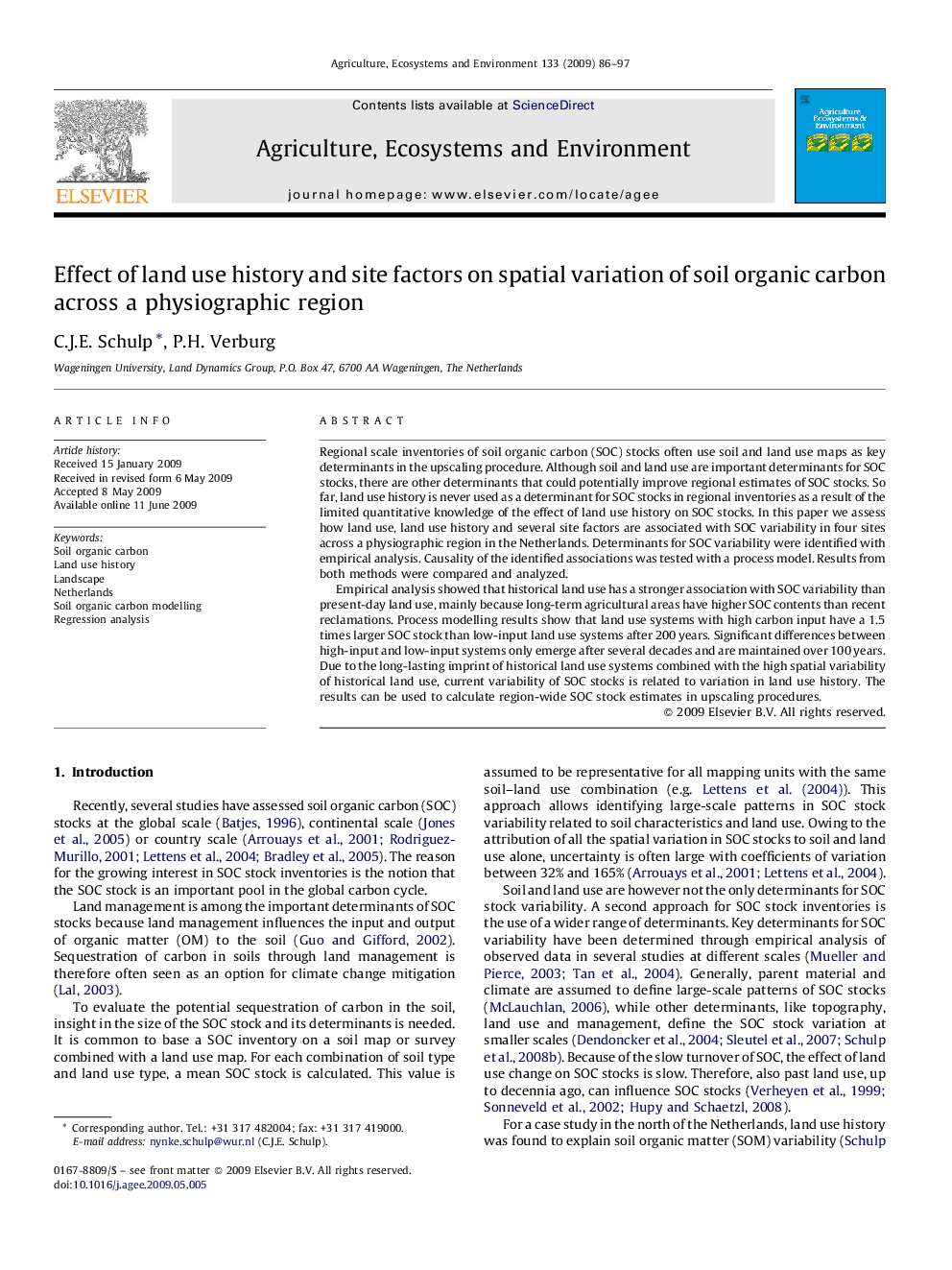| Article ID | Journal | Published Year | Pages | File Type |
|---|---|---|---|---|
| 2415104 | Agriculture, Ecosystems & Environment | 2009 | 12 Pages |
Regional scale inventories of soil organic carbon (SOC) stocks often use soil and land use maps as key determinants in the upscaling procedure. Although soil and land use are important determinants for SOC stocks, there are other determinants that could potentially improve regional estimates of SOC stocks. So far, land use history is never used as a determinant for SOC stocks in regional inventories as a result of the limited quantitative knowledge of the effect of land use history on SOC stocks. In this paper we assess how land use, land use history and several site factors are associated with SOC variability in four sites across a physiographic region in the Netherlands. Determinants for SOC variability were identified with empirical analysis. Causality of the identified associations was tested with a process model. Results from both methods were compared and analyzed.Empirical analysis showed that historical land use has a stronger association with SOC variability than present-day land use, mainly because long-term agricultural areas have higher SOC contents than recent reclamations. Process modelling results show that land use systems with high carbon input have a 1.5 times larger SOC stock than low-input land use systems after 200 years. Significant differences between high-input and low-input systems only emerge after several decades and are maintained over 100 years. Due to the long-lasting imprint of historical land use systems combined with the high spatial variability of historical land use, current variability of SOC stocks is related to variation in land use history. The results can be used to calculate region-wide SOC stock estimates in upscaling procedures.
